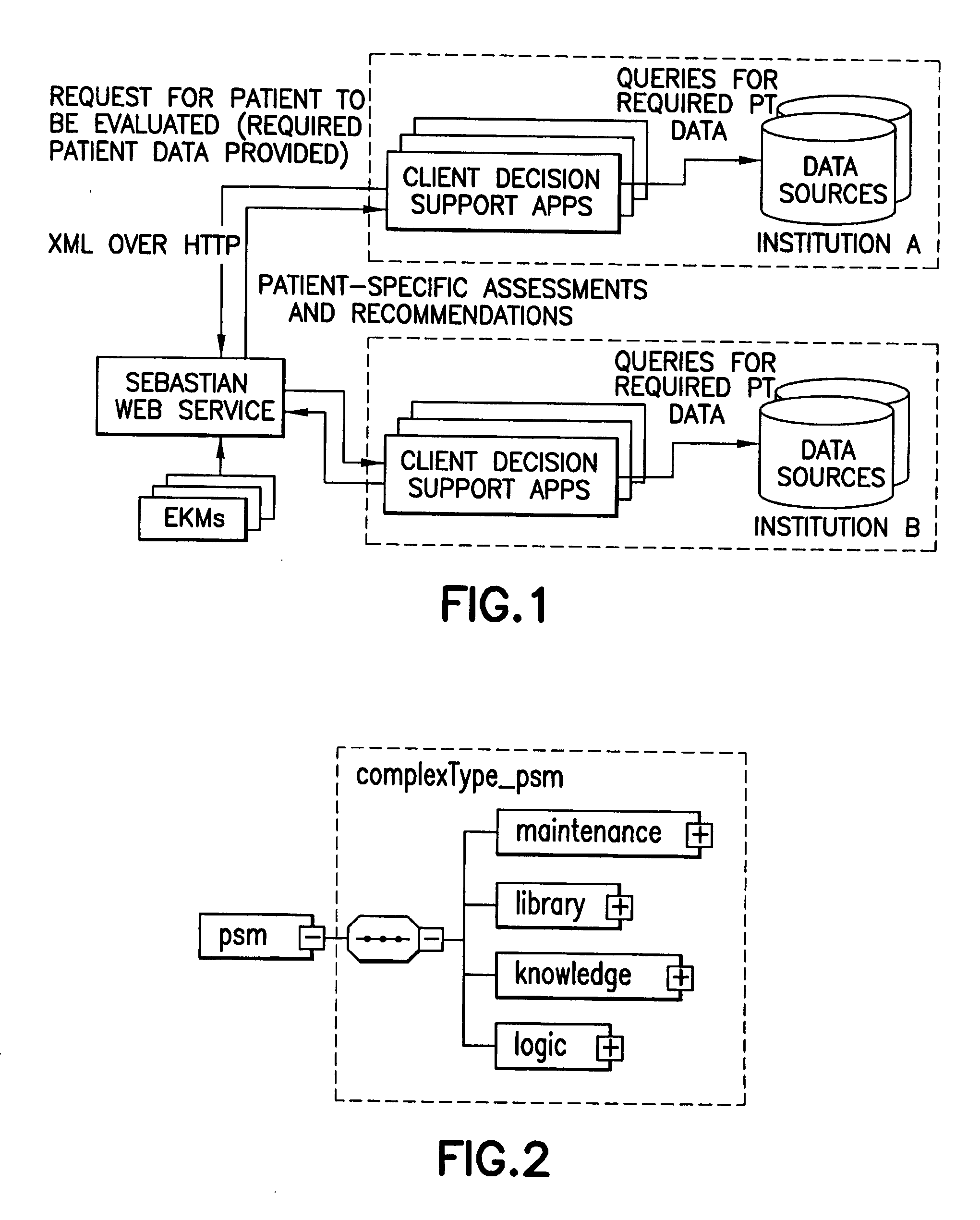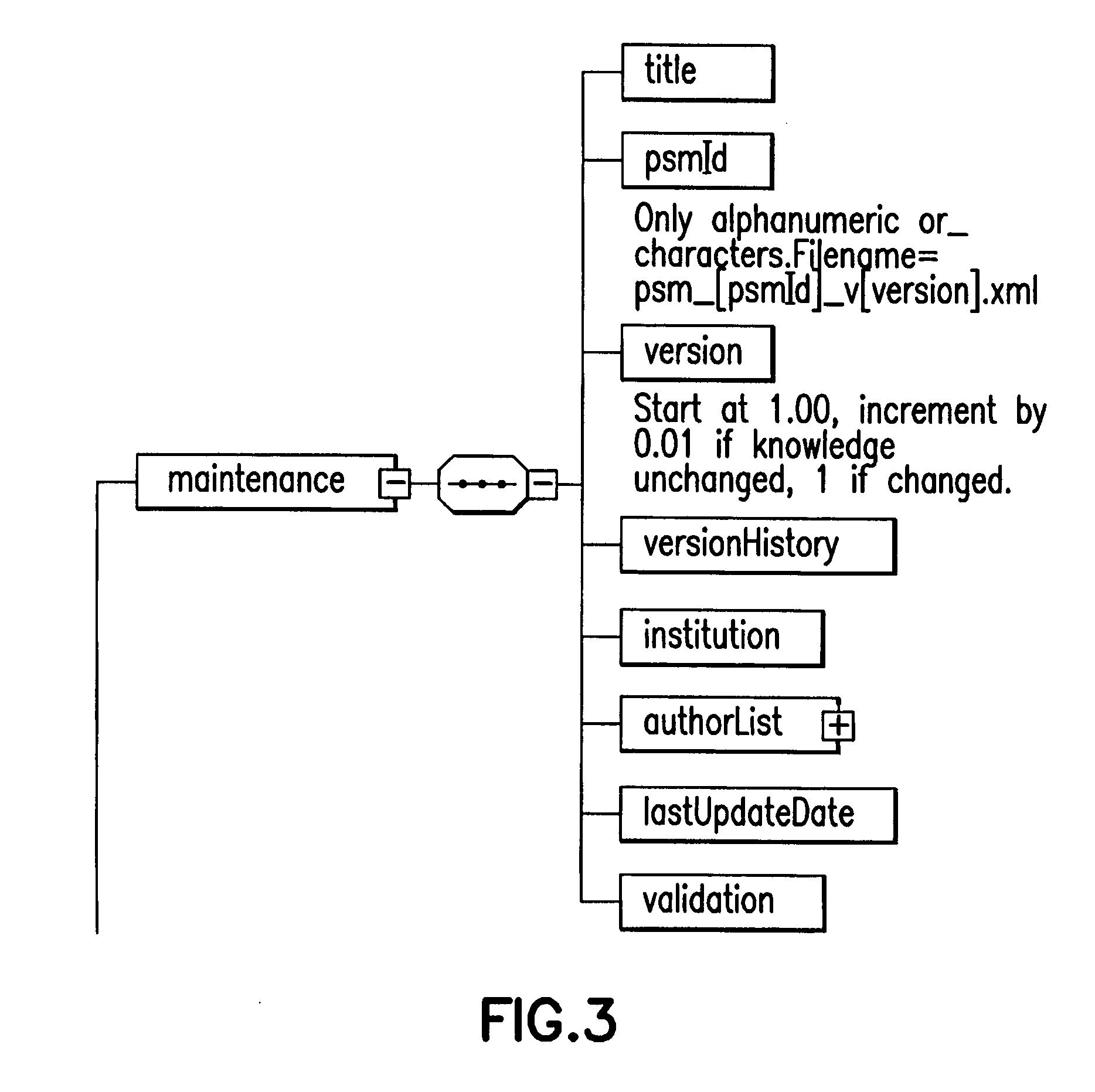Clinical decision support system
a decision support system and clinical technology, applied in the field of network-based clinical decision support system, can solve the problems of affecting healthcare services delivery and quality, unable to provide such decision support capabilities, and unable to meet the needs of patients,
- Summary
- Abstract
- Description
- Claims
- Application Information
AI Technical Summary
Benefits of technology
Problems solved by technology
Method used
Image
Examples
Embodiment Construction
[0055] For ease of description in the ensuing discussion, the following terms will have the following meanings:
[0056]“Clinical decision support” means the provision of patient-specific inferences to an entity interested in or involved in the health care of said patient;
[0057]“RIM” means the Health Level 7 (HL7) Reference Information Model;
[0058]“Web” means World Wide Web;
[0059]“World Wide Web” means a network of servers that supports the exchange of documents to and from computers connected to that network;
[0060]“HTML” means Hypertext Markup Language;
[0061]“HTTP” means Hypertext Transfer Protocol;
[0062]“Web service” means software that makes itself available over a network and uses a standardized or accepted messaging communication language, such as XML on the Internet (see also http: / / webservices.xml.com / pub / a / ws / 2002 / 02 / 12 / webservicefaqs.html, accessed Mar. 3, 2005);
[0063]“XML” means Extensible Markup Language, a communications language that is interoperative with differen...
PUM
 Login to View More
Login to View More Abstract
Description
Claims
Application Information
 Login to View More
Login to View More - R&D
- Intellectual Property
- Life Sciences
- Materials
- Tech Scout
- Unparalleled Data Quality
- Higher Quality Content
- 60% Fewer Hallucinations
Browse by: Latest US Patents, China's latest patents, Technical Efficacy Thesaurus, Application Domain, Technology Topic, Popular Technical Reports.
© 2025 PatSnap. All rights reserved.Legal|Privacy policy|Modern Slavery Act Transparency Statement|Sitemap|About US| Contact US: help@patsnap.com



